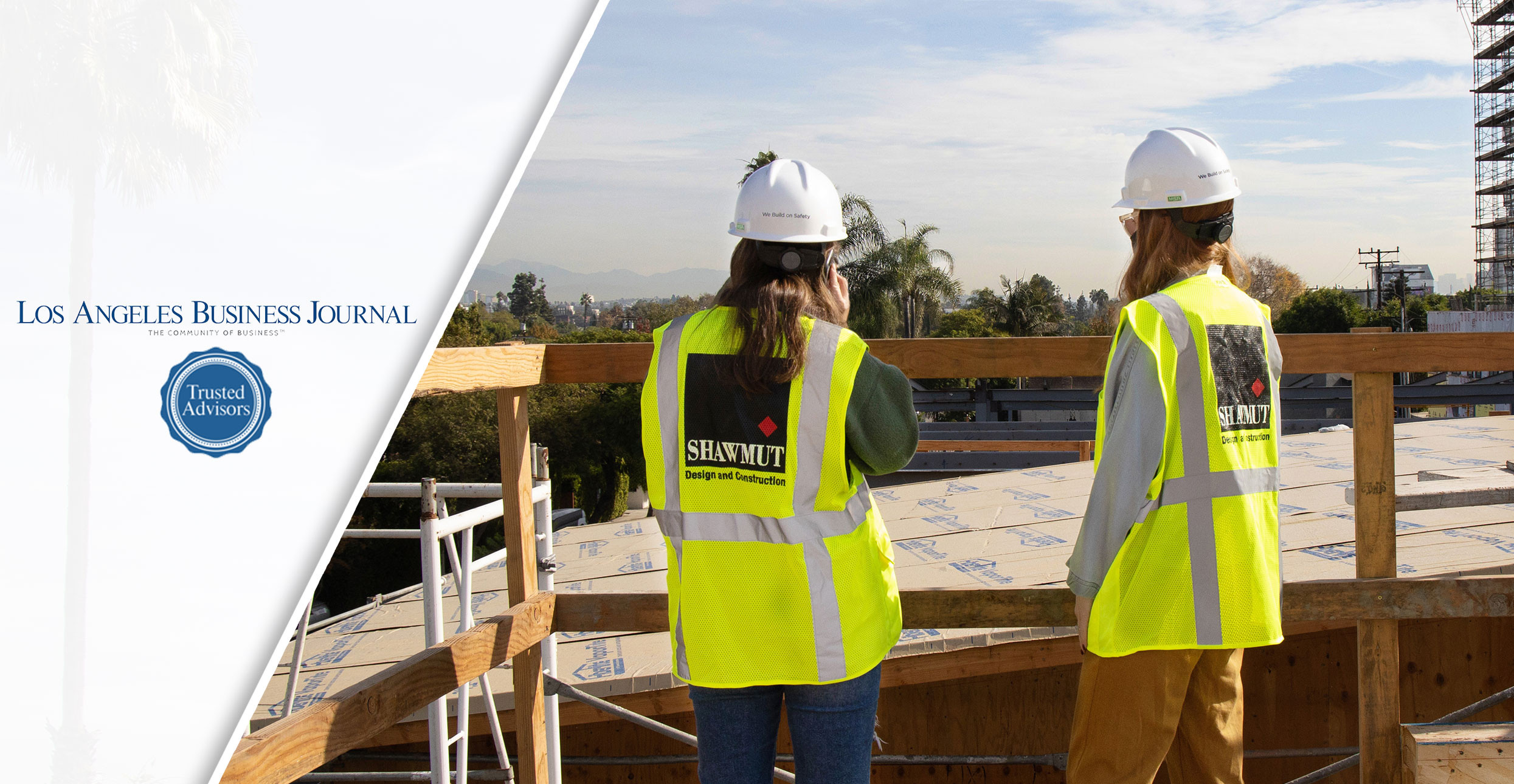Executive vice president of Shawmut West, Greg Skalaski, contributed his insights to Los Angeles Business Journal’s Trusted Advisors column on the journey to creating a diverse, equitable, and inclusive culture, which you can read below as well as here.
Organizations with inclusive cultures are twice as likely to meet or exceed financial targets; three times as likely to be high performing; six times more likely to be innovative and agile; and eight times more likely to achieve better business outcomes. And while this might seem like enough to drive any business to create a diverse, equitable, and inclusive environment for its employees, the ones that will make progress in working towards this goal are the ones that are willing to make it a business imperative.
At Shawmut, our philosophy is to provide the right tools, guidance from leadership, and development opportunities so our people can bring their best selves to work. Beginning our mission to diversity, equity, and inclusion (DEI), we aligned it with our core values: foster an inclusive environment where great ideas flourish and employees can be their best selves—ultimately allowing them to provide an unparalleled construction experience for our clients.
Know Where You Stand
We had begun our DEI work in 2010, simply because it was the right thing to do. But in 2014, we reached a set point—recognizing there were areas where we had more work to do, we became more strategic in our path towards DEI. Our CEO declared DEI a business imperative, and we created a Diversity Leadership Council (DLC) that partnered with Deloitte Human Capital to gather insights, metrics, and create a strategic framework so we continue to advance toward our goal of workplace equity. This acceleration of our journey is so we can have the strongest, most diverse representation—much like our clients do.
The civil unrest that took place in 2020 has also forced us to take a hard look in the mirror, asking ourselves if we’re pushing hard or fast enough for change, and adding a new level of urgency to our mission.
Establish Accountability
Accountability is key to a successful journey towards DEI—it needs to start at the top, with buy-in from executive leaders. We took a top-down approach, actively developing the skillset of our most senior leaders. The DLC established key performance indicators to hold themselves and the executive leaders accountable, setting measurable benchmarks to track our progress.
With research and backing from Deloitte, our first chair of the DLC was a white man—a leader from the majority with a proven skillset to lead and influence the rest of the majority. This was a crucial decision—inclusive leaders drive a 70% increase in the experience of fairness, respect, value, and belonging; psychological safety; and inspiration, ultimately leading to a 17% increase in team performance, 20% increase in decision-making quality, and 29% increase in team collaboration.
Create Focus + Metrics
When Shawmut first started on our journey to DEI, we had 30% diversity at the entry level and 10% at the senior level. While we are now up to 25% women and people of color at the senior level, and have a workforce that’s 35% women when the construction industry is only 10%, we realize there is still much work to be done and continuously evaluate our focus and metrics. To ensure we’re on the right track, we hold ourselves to quantifiable results—we gauge how inclusive our culture is based on exit interviews and engagement surveys.
Develop Measurable Programs
Since beginning our journey to achieve DEI, we’ve hit notable milestones including achieving 100% pay equity, creating a Small Business Diversity Initiative training program and enhanced MWBE partner outreach, and becoming a founding member of Diversity and Inclusion in Construction and Engineering (DICE).
With a focus on implementing proven programs and techniques, we launched a mentorship program that pairs mentors and mentees using a third-party algorithm that assesses goals and experience to scientifically make the best matches, eliminating the potential for unconscious bias in the matching process.
We are also leading the construction industry with our sponsorship program, pairing high-potential, underrepresented employees with executive sponsors to leverage sponsors’ experience, influence, and existing networks to bolster sponsees’ career aspirations. This mitigates the natural affinity for leaders to sponsor employees who are like them—with the goal of promotion to the leadership team. In our first round of sponsorship relationships, we had a 95% retention rate—50% of the sponsees were promoted during the 18-month relationship, 30% were promoted to our senior leadership team, and 100% reported increased feelings of engagement.
Embrace the Journey
Achieving DEI is a journey—there is no end point. In the West region, specifically, we host quarterly DEI discussions out of our Los Angeles office to have open and honest conversations—sharing resources and updates on programs as well as understanding what our people are feeling and experiencing. While challenging, it’s imperative work that we must take on not only within our own companies but the industry as a whole.
